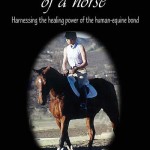The North American Riding for the Handicapped Association, also known as NARHA, originally formed in 1969, is now the Professional Association of Therapeutic Horsemanship International (PATH Intl.).
The association tagline is “Ensuring excellence and changing lives through equine-assisted activities and therapies,” and is designed to reconstruct the now outdated NARHA model. Because equine therapy is such an evolving modality, there are now a myriad of ways in which horses can be helpful in the therapeutic realm. Yet NAHRA focuses mainly on programs that are designed for handicapped riders.
However, NARHA is the oldest organization for any form of equine therapy, and therefore creates guidelines for all other equine therapy activities, including those produced solely for mental health benefit. Recognizing the obvious constriction of this setup, the NARHA Board of Directors voted for the name change for several reasons.
Primarily, PATH is a much broader based organization, allowing for regulation of many types of equine therapy, including equine assisted psychotherapy, and learning.
Secondly, the term “handicapped” is no longer considered correct, and those who are restricted to a wheelchair prefer to be referred to as “wheelchair bound.”
Continue reading Equine Therapy: NAHRA No More, Now PATH, by Claire Dorotik
